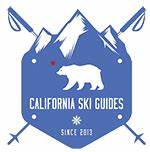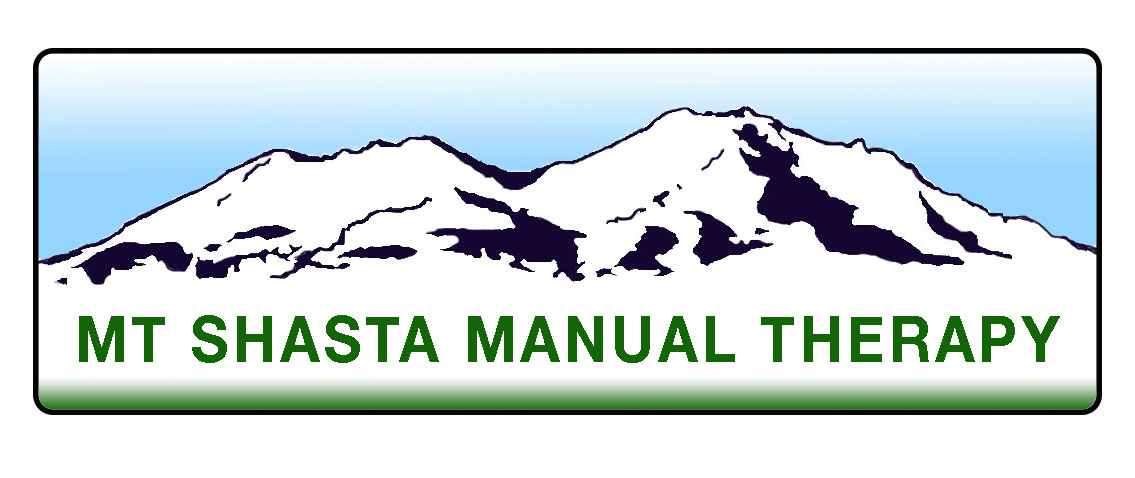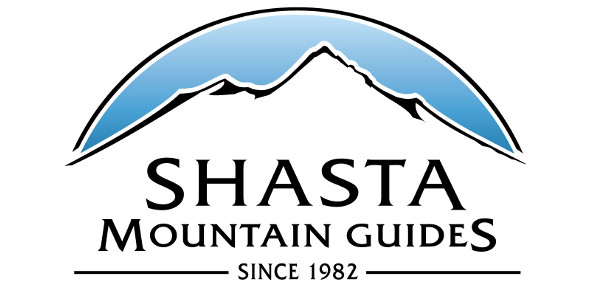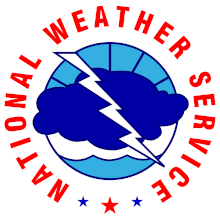You are here
Avalanche Advisory for 2014-03-22 06:33:48
- EXPIRED ON March 23, 2014 @ 6:33 amPublished on March 22, 2014 @ 6:33 am
- Issued by Nick Meyers - Shasta-Trinity National Forest
Bottom Line
The avalanche danger is LOW for all elevations and aspects. Normal caution is advised.
Carry an avalanche beacon, shovel, and probe and know how to use them when traveling in the winter backcountry.
Snow conditions on Mt Shasta are smooth and firm in the AM hours. This poses risk for a long slide for life should one slip and fall. Ice axe, crampons and self-arrest skills are required for a safe climb...and ALWAYS wear a helmet!
Avalanche Problem 1: Normal Caution
-
Character ?

-
Aspect/Elevation ?

-
Likelihood ?CertainVery LikelyLikelyPossible
 Unlikely
Unlikely -
Size ?HistoricVery LargeLargeSmall

Overall, LOW avalanche danger exists for all elevations and aspects on Mt Shasta. Remember, LOW avalanche danger means natural and human triggered avalanches are unlikely, however small avalanches in isolated areas or extreme terrain are possible.
Recent Observations
The spring skiing conditions have been excellent on the South side of Mt Shasta as of late. Lower slopes have not been too soft or punchy providing good exits from the upper slopes which have been thawing nicely if your timing is right. Overall, the snow coverage is still decent considering our well below average snowfall this season. The most sun exposed areas are beginning to melt out but navigation and travel is still not an issue at this time. Stay tuned to our ever changing conditions as Spring continues!
For climbers, conditions are excellent on all routes. The season for climbing Mt Shasta is going to be shifted forward this year. On a normal year with ample snow on the ground, good climing conditions usually start in April and can go all the way into July sometimes. This year is not the case...the best conditions to climb Shasta this year will be NOW through April and potentially May. The extent of good climbing conditions will hinge on our Spring weather. More snow could potentially extend the season and warm days with shining sun will shorten it. While the mountain looks like it's got a thick blanket of snow on it, in reality there is only about 2-5 feet of snow on the ground, depending on aspect and elevation. Good climbing conditions, in general, means snow on the mountain. As the snow melts, rockfall increases and a climb of Shasta becomes more dangerous. All in all, sooner than later will be best for climbing Shasta. Check the climbing advisory on our webpage also!
PLEASE NOTE: Snow conditions on most routes are smooth and firm, especially in the AM hours. Conditions as such have lead to accidents due to slip/falls and failure to self arrest. A slip and fall on smooth, firm and sometimes icy snow can result in a slide for life on the steeper slopes of Mt Shasta. Self arrest skills with an ice axe and proper crampon use are essential for a safe climb. Do not under estimate the importance of proper knowledge and skills with your ice axe/crampons/self arrest techniques. Further, an avalanche beacon, shovel and probe are recommended for any climbers attempting Shasta currently. Lastly, with snow on mountain, the rockfall danger has been low. However, rime ice can plaster exposed rocks on Shasta this time of year. As the days warm, the rime ice will flake off and fall onto climbers below, especially on the Avalanche Gulch route. Ice is like a rock and a HELMET should always be worn.
Aerial photo of the South side of Mt Shasta, taken by local pilot Troy Bainbridge about 2 weeks ago.

---------------------------------------------------------------------------------------------------------------------------------------------------------------
While Northgate, Brewer Ck and Clear Ck trailheads are officially closed, the bathrooms are still open with packout bags inside, and one can still access the Mt Shasta Wilderness. However, your summit pass and wilderness permits must be purchased at McCloud or Mt Shasta Ranger Stations. NO DOGS are allowed in the Mt Shasta Wilderness OR Sierra Club Property. Thanks!
---------------------------------------------------------------------------------------------------------------------------------------------------------------
Terrain: Remember most of the terrain that we like to play on is greater than 30 degrees. Avalanches are possible on anything steeper than 30 degrees. Avoid cornices, rock bands, terrain traps and runout zones of avalanche paths.
Weather: Most of our areas avalanche danger will occur 24-48 hours after a storm. We still can see persistent weak layers from time to time and we always will be sure to let you know about that! Heed the basic signs: Wind (significant snow transport and depositions), Temperature (rain/snow/rain/snow, which in turn weakens the snowpack), and Precipitation (Snow or rain add weight and stress to the current snowpack).
Snowpack: If snow accumulates, give the snowpack a chance to adjust to the new snow load before you play on or near steep slopes (greater than 30 degrees). Most direct action avalanches occur within 24-48 hours of recent snowfall. Watch for obvious signs of snowpack instability such as recent natural avalanche activity, collapsing of the snowpack (often associated with a “whumphing” sound), and shooting cracks. If you see these signs of instability, limit your recreation to lower angle slopes.
Human Factor: Don’t forget to carry and know how to use avalanche rescue gear. You should NOT be skiing or climbing potential avalanche slopes without having beacons, shovels, and probes. Only one person in a group should be exposed to potential avalanche danger at a time. Remember, climbing, skiing, and riding down the edge of slopes is safer than being in the center. Just because another person is on a slope doesn’t mean that it is safe. Be an individual! Make your own decisions. Heed the signs of instability: rapid warming, “whumphing” noises, shooting cracks, snowing an inch an hour or more, rain, roller balls, wind loading, recent avalanche activity.
Weather and Current Conditions
Weather Summary
In Mt Shasta City this morning at 0500, we have clear skies with a current temperature of 28 F.
On Mt Shasta (South Side) in the last 24 hours...
Old Ski Bowl - 7,600 feet. The Old Ski Bowl weather station has received no new snow in the last 24 hours. The current temperature is 28F with a low of 28F and a high of 45F. Total snow depth is 52 inches with little settlement.
Gray Butte - 8,000 feet - The current temperature is 29F. Temps have ranged from a low of 28F to a high 44F. Winds have averaged 5-10 mph and variable in direction with max gusts reaching 42 mph from the northwest.
Castle Lake and Mt Eddy (West side of I-5)...
Castle Lake - 5,600 feet, the current temperature is 32F with a low of 31F and a high of 47F. Castle Lake has received no new snow and has a current snowpack of 0-3 inches with little settlement.
Mt Eddy - 6,500 feet, the current temperature is 25F with a low of 25F and a high of 43F. Mt Eddy has received no new snow and hosts a current snow depth of 16 inches with 1 inch settlement. Winds have averaged 3 mph and southerly in nature, with gusts to 11 mph, SE.
THIS SEASON: Since September 1st , we have received 11.33 inches of water, normal is 34.71 inches, putting us at 32% of normal. For the year of 2014, Mt Shasta has received 8.51 inches of water with normal being 18.83 inches which puts us at 45% of normal. And lastly, for March we sit at 54% of normal, receiving 2.47 inches of water, normal is 4.54 inches.
WEATHER SYNOPSIS:
High pressure today will bring sunny skies and calm winds to Mt Shasta. Weather and conditions for climbing should be very good. Nothing much else of note for today. We will see a slight warming trend over the weekend followed by a few days of low pressure and wet weather during the beginning of the work week. We should see some cooling with the associated low and this will drop snow levels to near 5,000 feet.
Always check the weather before you attempt to climb Mt Shasta. Further, monitor the weather as you climb. Becoming caught on the mountain in any type of weather can compromise life and limb.
| 0600 temperature: | 28 |
| Max. temperature in the last 24 hours: | 45 |
| Average wind direction during the last 24 hours: | Variable |
| Average wind speed during the last 24 hours: | 5-10 mi/hr |
| Maximum wind gust in the last 24 hours: | 42 mi/hr |
| New snowfall in the last 24 hours: | 0 inches |
| Total snow depth: | 52" inches |
Two Day Mountain Weather Forecast
Produced in partnership with the Medford NWS
| For 7000 ft to 9000 ft | |||
|---|---|---|---|
|
Saturday (4 a.m. to 10 p.m.) |
Saturday Night (10 p.m. to 4 a.m.) |
Sunday (4 a.m. to 10 p.m.) |
|
| Weather | Sunny | Clear | Sunny |
| Temperature (°F) | 50 | 24 | 54 |
| Wind (mi/hr) | Variable, becoming southwest Calm, 5-10 mph in afternoon | Northwest, becoming variable 5-10 mph | Variable, becoming West/Southwest in afternoon Calm, becoming 5-10 mph |
| Precipitation SWE / Snowfall (in) | / 0 | / 0 | / 0 |
| For 9000 ft to 11000 ft | |||
| Saturday | Saturday Night | Sunday | |
| Weather | Sunny | Clear | Sunny |
| Temperature (°F) | 32 | 14 | 36 |
| Wind (mi/hr) | North, becoming east 5-10 mph | East, becoming West 0 | Northwest, becoming West/Southwest in the morning 10-15 mph |
| Precipitation SWE / Snowfall (in) | / 0 | / 0 | / 0 |


























































